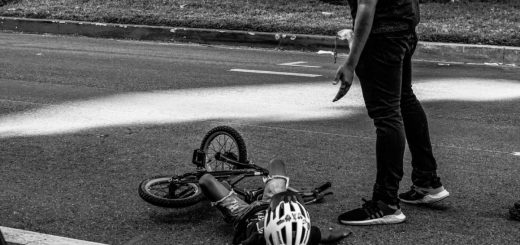Fail Faster at Habits
There are two extremely common obstacles that get in the way of people succeeding at habit change:
Messing up on the habit and then quitting. Not starting because the habit change seems to hard or daunting.Have you faced these problems? The answer is almost certainly yes, because pretty much all of us have.
The answer to both of these problems is really the same: do the habit. Keep doing it. Keep trying until you figure it out.
The problem is that people feel discouraged by failure, or feel overwhelmed or intimidated.
The solution is to embrace the “Fail Faster” and iterate philosophy that’s all the rage in software.
Most Important: Just ShipThe Model T was created after Henry Ford and his partner shipped a very imperfect Model A automobile, and had their mechanics gather real-world information about problems with the car. And then they made it better, one problem at a time.
They only gathered this information by shipping the car.
You’ll only gather the real-world information you need to make the habit stick (exercise, diet, meditation, reading, creating, non-procrastinating, yoga, etc.) by actually doing the habit.
So the most important thing you can do is do the habit every day. If you make mistakes, that’s great, because it’ll help you improve your habit method.
Embrace Failure as LessonsMissing a day of your meditation habit isn’t absolute failure. Neither is messing up on your diet when you go to a party. Neither is failing to exercise when you’re on a trip.
It’s not a complete failure to mess up. The only true failure is when you don’t learn from the mess-up, and get better at the method.
So embrace each little problem as a way to get better. It’s a part of the process.
Give yourself credit for trying and failing. You don’t get credit for quitting or not trying.
Fail FasterOK, that’s all great … but how do we incorporate failure and learning and shipping into a method for changing habits?
Here it is — the Fail Faster Method:
Write out a brief habit method — for example, “Walk every day for 20 minutes after work at 5pm at Washington Park.” Ship. That means start the habit. Get it going as easily as possible, so you can gain real-world info. Do the habit for just 3 days — this is an iteration of your habit method. Don’t aim for 30 days, just 3. Fail faster. After doing the habit for 3 days, do a 2-minute review: how did the plan go? Did you do the habit every day? What worked? What got in the way? Adjust. Learn from your last iteration by improving the method. If you didn’t go because you felt tired, can you try exercise at a different time? Can you do it for a shorter time (just 10 minutes)? Can you do it with a friend? Try googling your habit obstacle if you can’t think of a solution — lots of people have had the same obstacle and figured out a solution. Ship again. After a 3-day ship, review, and adjust cycle, repeat the cycle. Every 3 days. Do the habit, do a 2-minute review, and adjust.If you follow this plan, it’s guaranteed to work. Give yourself brownie points for shipping, for reviewing, for continuing the cycle. Treat each cycle as an experiment, with a hypothesis and a test and an analysis of the data. Experiment again.
Three-day cycles are amazing because you’re iterating faster than pretty much any other method out there. You could iterate daily, actually, but you’re likely to have better data after three days instead of just one.
Embrace experiments, ship, learn from failure, and fail faster.


